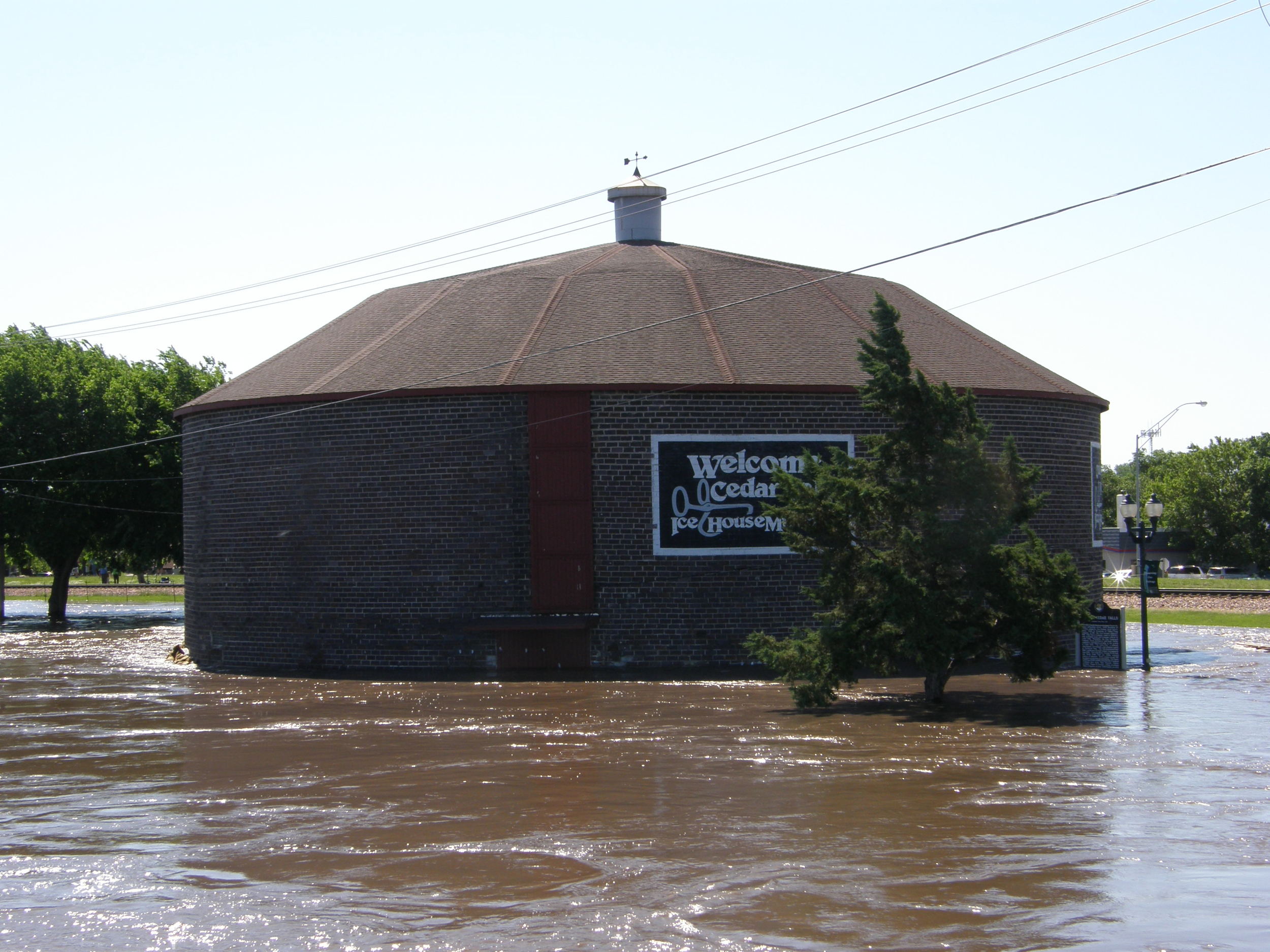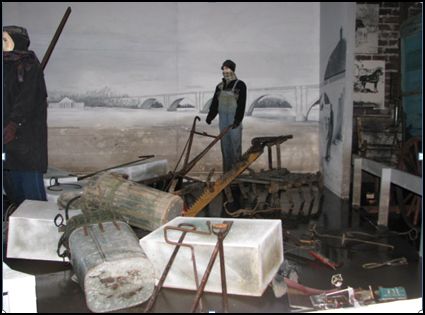Ice House
Amelia Whitehead
Julie Huffman-klinkowitz, Collections Manager, Cedar Falls Historical Society, Cedar Falls, Iowa
In June 2008, a devastating flood swept through our largest museum, the Ice House Museum, inundating exhibits to a depth of 4 ½ ft. Exhibits had been set up in the mid-1970s to depict vintage Main Street shop fronts and each shop contained hundreds of artifacts. Many of these objects were donated by the large group of volunteers associated with the museum at the time it was established. They fit well with the theme and structure of the exhibits and were fascinating to visitors. However, the seemingly endless capacity of the 7,850 sq. ft. building to hold even very large objects set the stage for a crisis in terms of inventory and future storage when the flood hit.
Objects that were saved needed not only cleaning and conservation, many needed to be identified because object numbers had been partially or entirely lost. As collections staff began the lengthy process of matching objects with catalog records, the Board of Directors engaged in a re-conceptualization and new exhibit focus for the museum which would more clearly adhere to the mission of the organization. The professionally redesigned museum would integrate the unique character of the building and its original use with the impact of the river on the foundation and economic development of the city. This provided an opportunity to question the suitability of retaining some of the artifacts.
Collections staff formed a special deaccessioning committee for the artifacts affected by the flood, which included present and past collections staff, Board members, and people who had a long association with the flooded museum. Only those artifacts which were unanimously approved for deaccession by this committee were presented to the Board of Directors for final approval.
One example of this process involved the large collection of agricultural equipment included in the former exhibits. Among these implements were a couple dozen hand plows, none of which had substantial historical links to our area. The new museum would not focus on agriculture and there was no foreseeable scenario in which these hand plows would ever again be exhibited nor were they unique enough to be retained for research purposes. One or two hand plows in good condition would be adequate for future exhibition and less costly to store. The superfluous hand plows were approved for deaccession and given to another museum whose focus was on agriculture.
This process of matching objects impacted by the flood to catalog records, assessing their present suitability to the collection, and suggesting those for deaccession that do not fulfill the mission of the Museum continues. The question of how pertinent any given object is to our mission is weighed against its rarity, condition, and how much we will pay to store the object over the long term. The lessons we learned from the flood have alerted us to the necessity of caution in accepting donations and a realistic view of long term curation costs, both in terms of storage costs and staff time.

